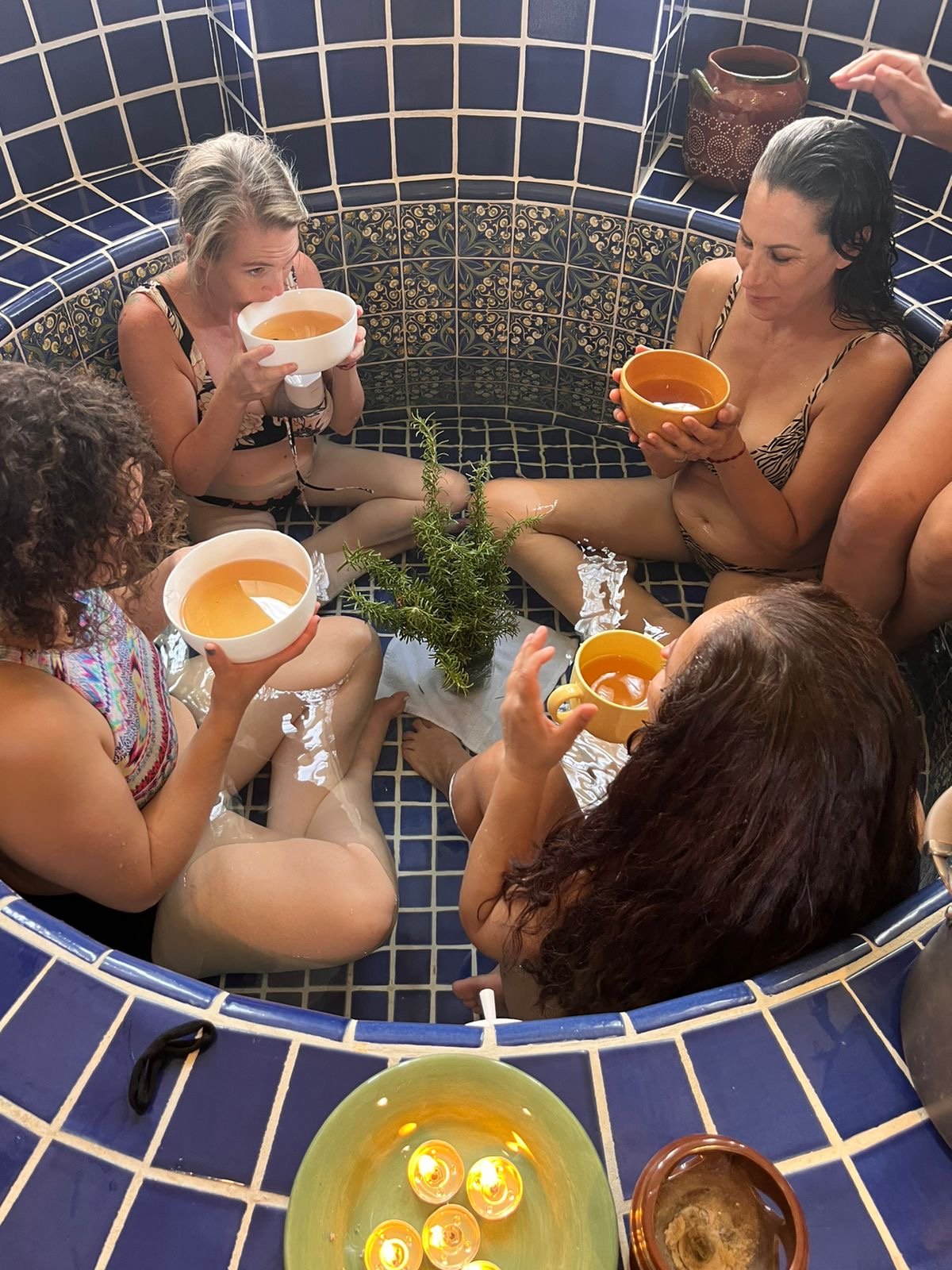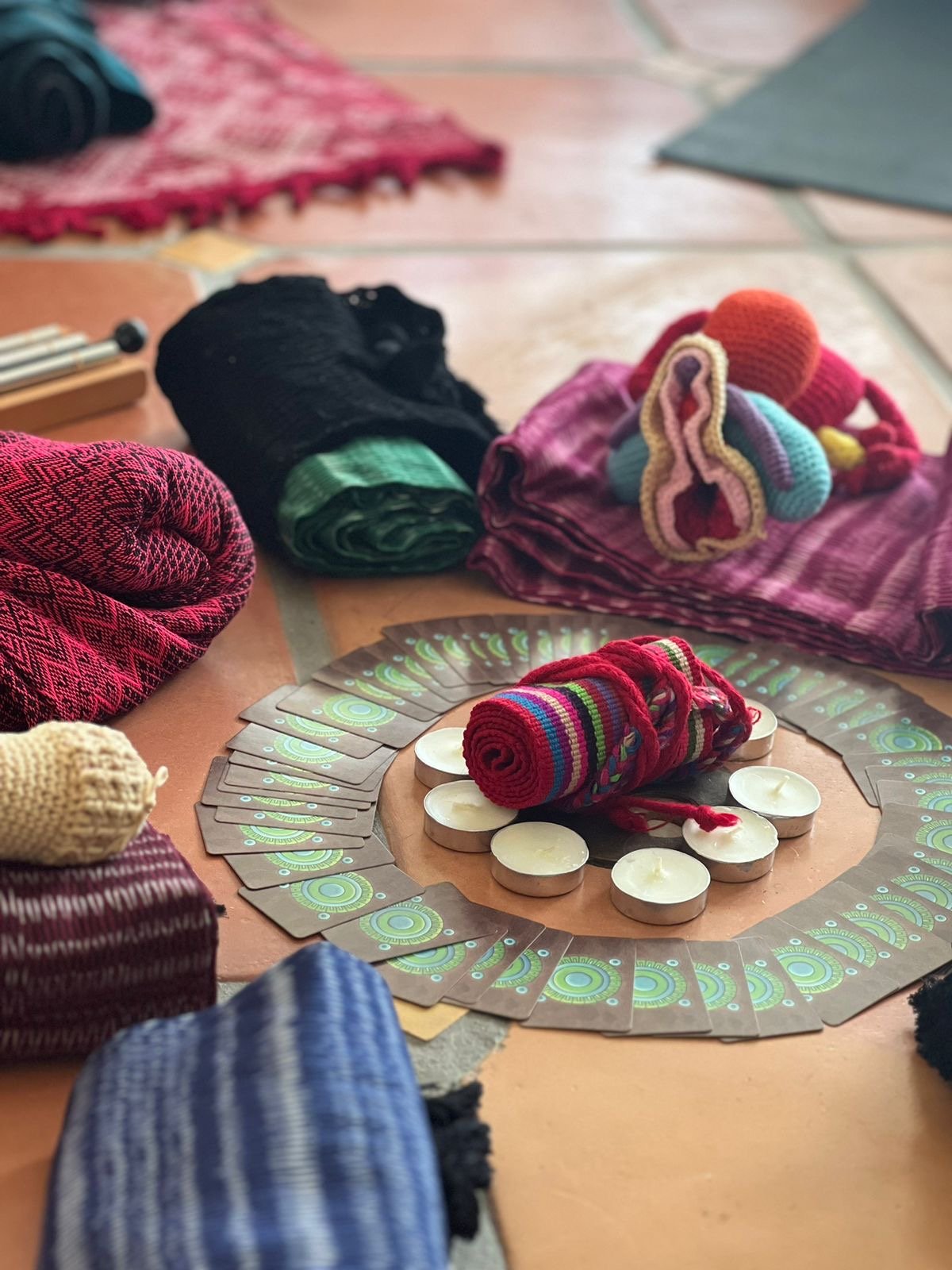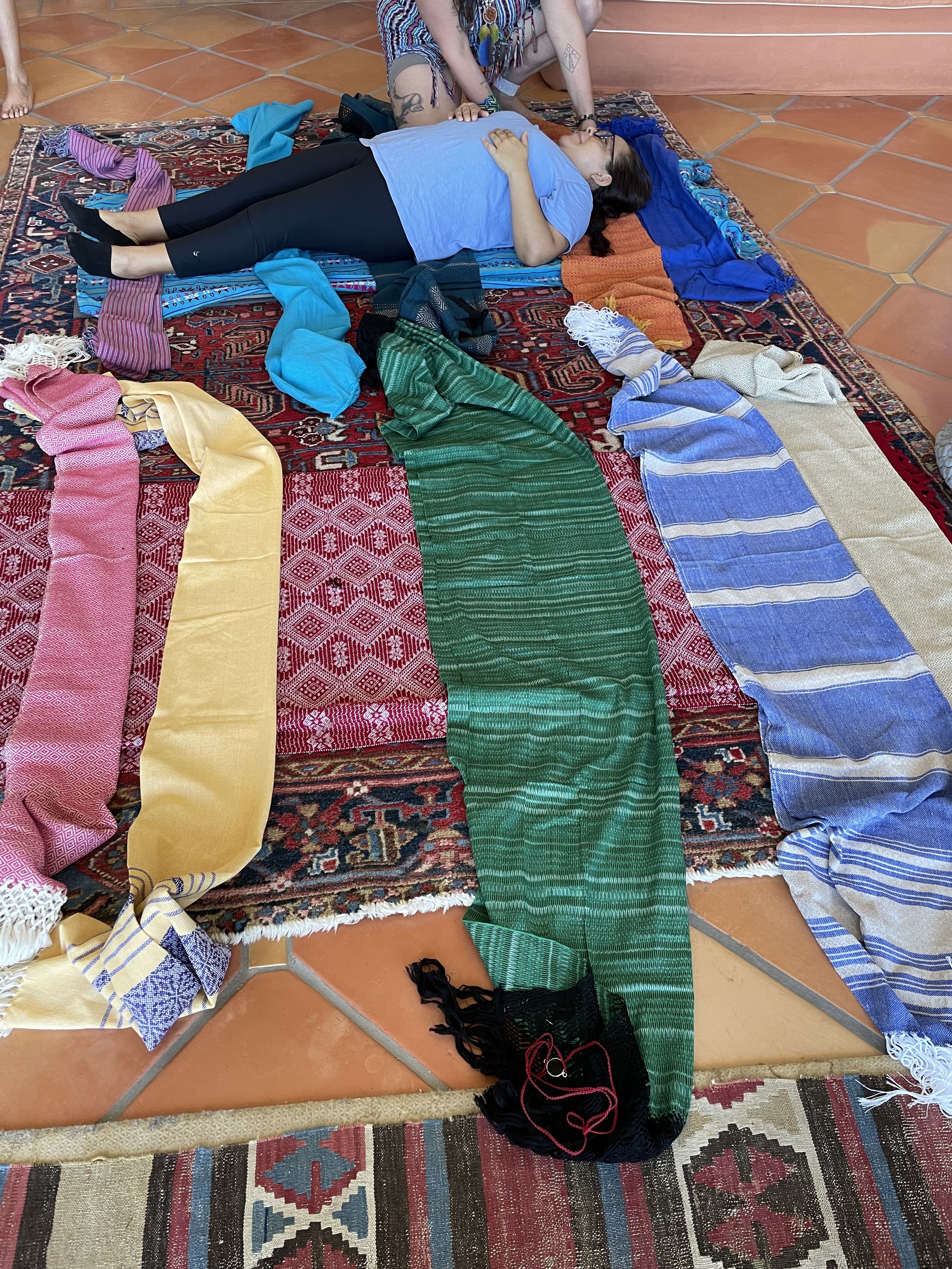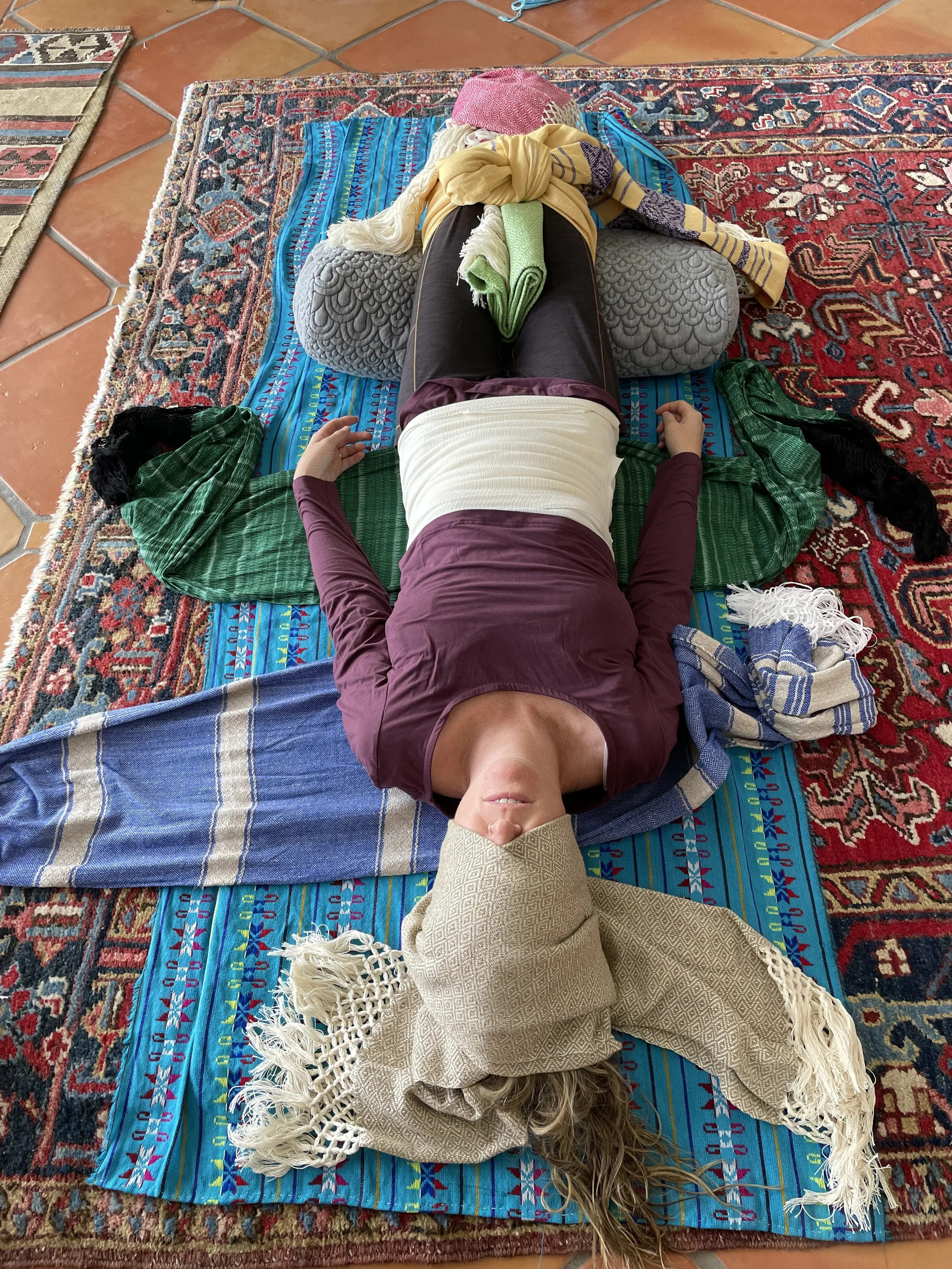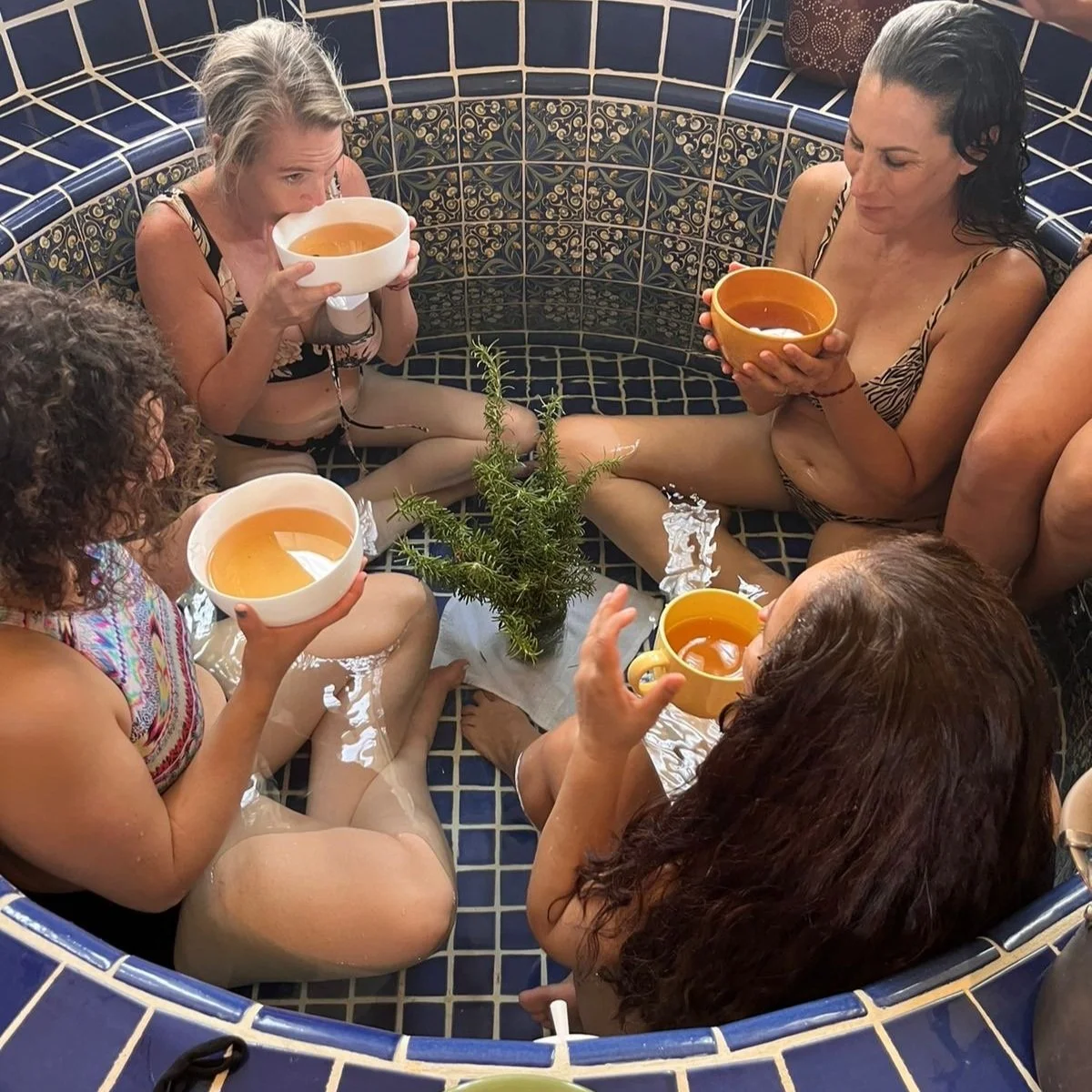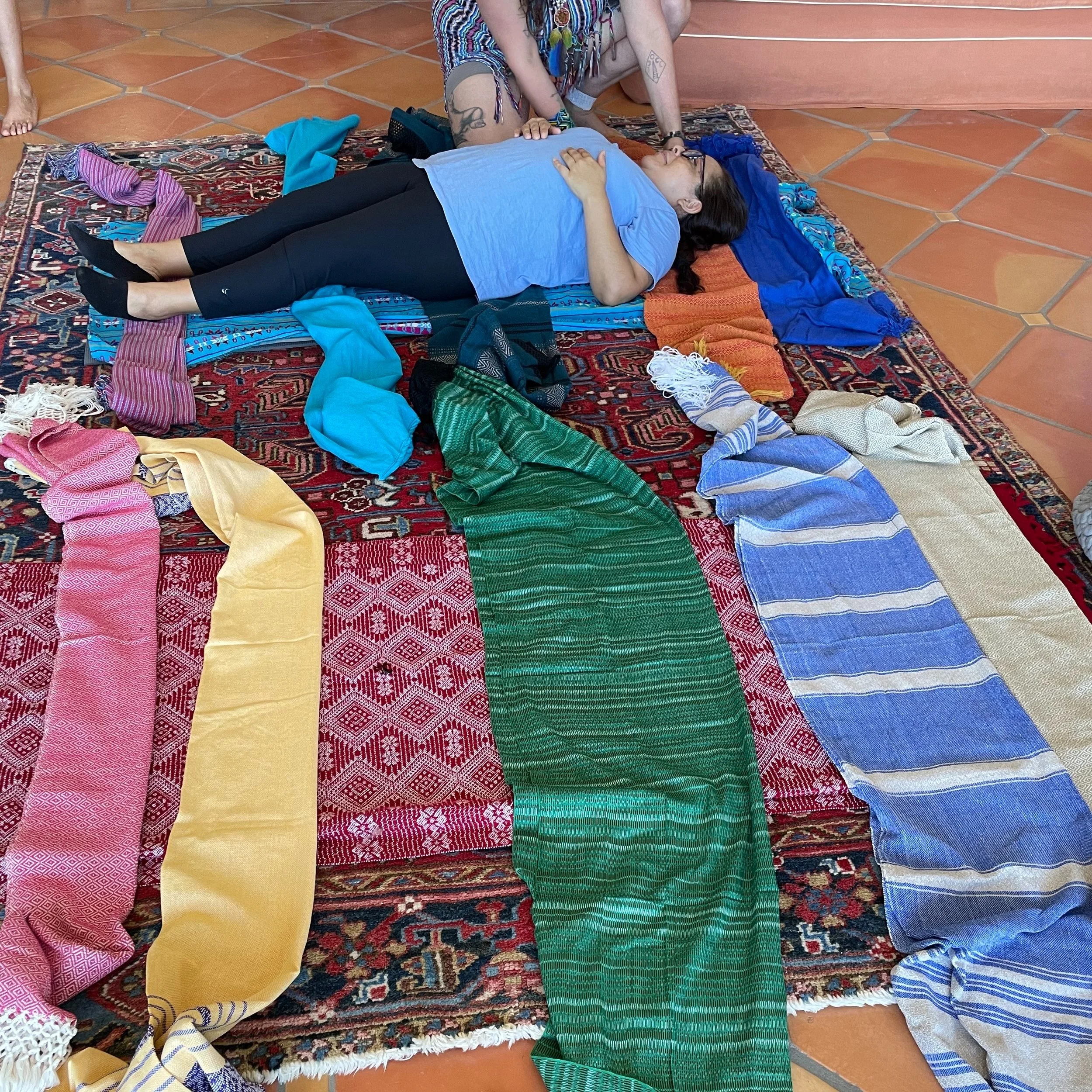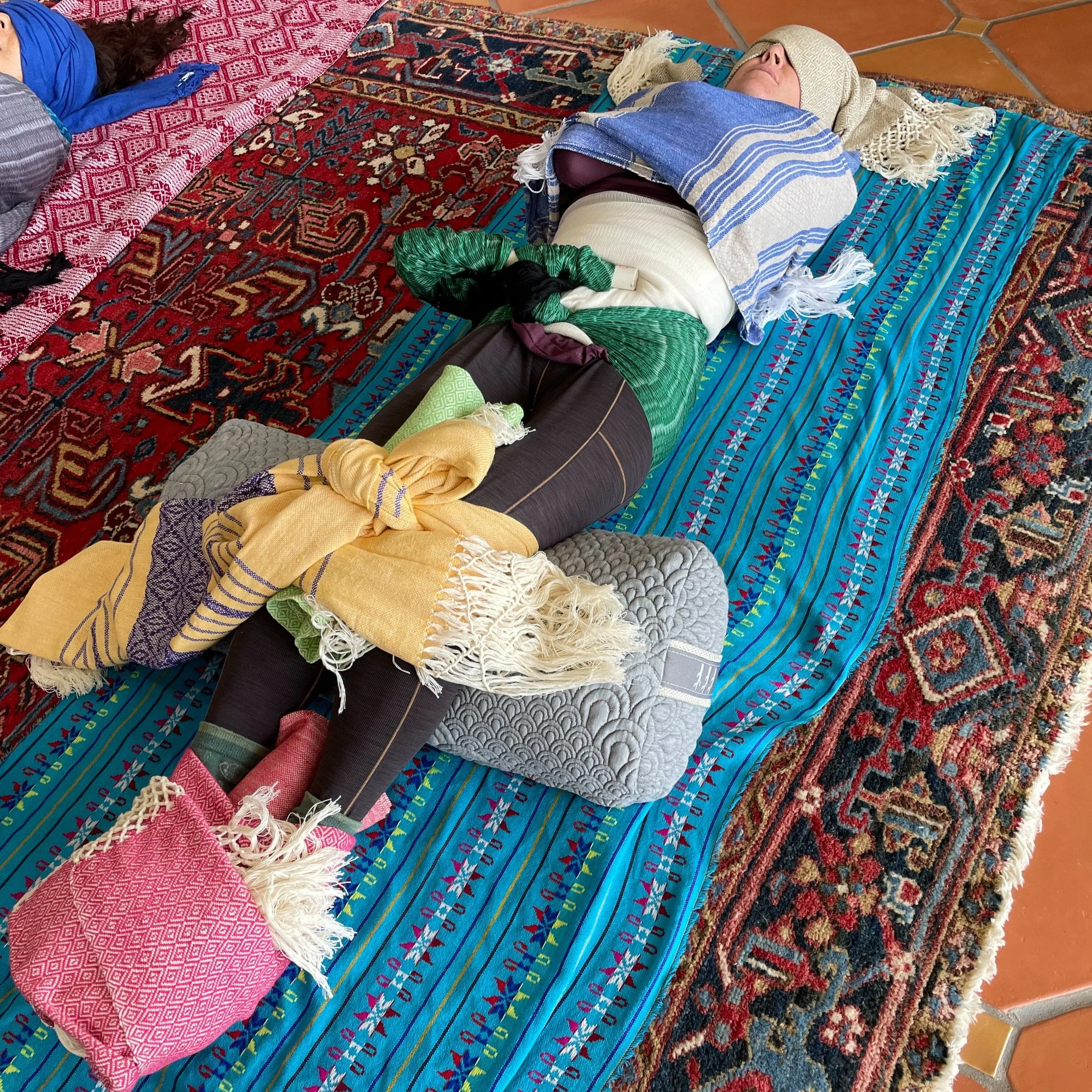Closing of the Bones Ceremony
Closing of the Bones (Cierre de Cadera y de Ciclos) is a Ceremony facilitated during a time of transition or a closing of a cycle of life. It is the ritual of practice for any completed cycle to give way to a new one.
The life/death/life cycle shows up many ways throughout life. It can be seen each day in the setting of the sun and the rising of the moon, women experience a death through menstruation each month, and you’ve likely felt cycles of death in your life. These are, perhaps, of a living being or of a version of yourself as you transition through different identities in your life.
When a closing of a chapter occurs, it is helpful to honor this transition. Some examples of these transitions and great times for this ceremony include:
Changing jobs
Moving
Empty nesting
Menopause
Marriage
Graduation
Divorce
Pregnancy lost
A special birthday
Postpartum
Any other meaningful transition
Ceremony helps the body and spirit move from one identity to another.
When there is ritual involved, the nervous systems can more easily adapt to a new way of being. Have you ever felt like you needed closure of a relationship/job/situation? Without closure it has felt incomplete and you are still pulled towards the past? This is the ceremony that can help.
Closing of the Bones is a ceremony for completing a cycle and stepping into something new. Different traditions will include alternate elements in the ceremony, so you may see different descriptions of this ceremony throughout different lineages.
Most commonly used for postpartum (40 days or more after birth) Modifications of the ceremony are chosen specifically for the person and the transition they are going through, however, the main aspects of the practice will stay the same.
For example, if pregnant, there is no binding or tying of the body. There is a similar massage using rebozos, but the body is lightly covered instead of bound with knots.
For men, there is no yoni steam, instead there is an option for Breathwork or solo reflection time.
The way I was taught, includes a multi-piece ceremony. This can take anywhere from 2-6 hours, best done during a time where rest can follow. The basic sequence of events consists of:
Altar creation and intention setting
Yoni Steam (Ceremonia con Vaporización)
Herbal Bathing (Baño de Hierbas)
Rebozo Massage (Masaje de Rebozo)
Closing of the Bones (Cierre de Cadera y de Ciclos)
The Process
The elements used during this ceremony, have been passed down for many generations in Mexican culture.
Yoni Steam (Ceremonia con Vaporización)
Image by The Herbal Toad
Vaginal vaporizatión, also called vaginal steaming or yoni steaming, is an ancient Mexican practice where a woman squats or sits over warm steam infused with medicinal plants. It is believed to allow for cleansing physically and energetically. Yoni steams are safe for women during many stages of life. This practice can be started as soon as bleeding stops postpartum, and is not to be used while a woman is on her period.
The benefits span through many aspects of the body and spirit. Physically, it increases circulation, increases cervical fluid, improves menstrual cycle regularity, regulates blood flow, relieves menstrual cycle pain. Energetically, it can clear past patterns, soothe the energetic system, and allows for deep rest. Psychically, it cleanses memories from the womb space so stuck energy can move and new emotional and mental well-being can come in. And spiritually, it is known to help you connect with your inner power and voice.
Yoni steaming is known to be a calming ritual and can be a balm for when the body and spirit feels overwhelmed. Below is a list of other benefits and issues that can be positively impacted through yoni steaming.
Menstrual symptoms including cramps, inflammation, heavy or light bleeding, exhaustion.
Infertility
Hemorrhoids
Stress
Vaginal infection
Vaginal tissue health
Libido
Sleep quality
Ovarian cysts
Pelvic pain
Constipation and inflammation
Menopause symptoms
Vaginal dryness
The types of herbs used are chosen for the participant based on the ailment or phase of life they are working with for the ceremony. The best herbs are those that are grown locally, definitely without pesticides or chemicals since they will be absorbed by the skin, and if possible, those that tie to the participant or facilitator’s lineage.
Herbal Bathing (Baño de Hierbas)
A herbal bath is a traditional medicine of many people in the Americas, Asia, and Europe. Herbal baths have traditionally been used to heal the physical body as well as cleanse the spiritual body. Some traditional herb baths have been used to heal or mend:
Skin irritation
Arthritis
Physical and spiritual cleansing
Respiratory issues
Feelings of weakness or exhaustion
Gynecological problems
Postpartum rehabilitation
Fever
Inflammation
It is customary to give an herbal bath to a woman after birth. It is believed that bathing helps a woman eliminate accumulated toxins, fluid and fatigue, as well as helping her bones and tissues return to place after pregnancy and birth. Bathing helps a woman eliminate accumulated toxins, fluid and fatigue, as well as help her tissues and bones return to their place after having expanded and opened during pregnancy and childbirth.
Rebozo Massage (Masaje de Rebozo)
The rebozo massage is based on the combination of soft and rhythmic movements, using the rebozo, or woven shawl, as an extension of the therapist's hands. This therapeutic technique aims to release energy blockages, relieve muscle tension and promote deep relaxation of the body and mind. Additionally, it is believed that rebozo massage can balance the body's energy centers, known as chakras, and restore internal harmony.
The piece of material used, called a Rebozo is an integral part of Mexican culture. The Rebozo is considered sacred and was believed to be full of energy and healing power. It is often used by traditional midwifes as a tool for massaging pregnant women, giving fertility treatments, supporting the body and soul through rites of passage rituals, and wrapping babies.
"It was an essential part of women's daily lives, used to carry babies, protect themselves from the sun and as a symbol of identity and cultural heritage." - Miriam Yanet Alavos
Closing of the Bones (Cierre de Cadera y de Ciclos)
The final piece of using the rebozos involves tucking, or knotting the rebozos so they create a bind around the participant. This is designed to create a deep sense of being held for the participant. This is the final of the stages of “death” where they are able to let go of the past stage of life and be unraveled to start anew.
During this time of deep rest, there will be sound healing and song.
As the participant is unraveled, they may choose to rest, to share their experience, or will be ready for a gentle meal.
Integration
Some people notice the affects of this ceremony immediately. Most people will feel refreshed and rejuvenated. The deeper effects of this practice may take place over the upcoming days. It is advised to allow time for rest, sharing about the experience, and journaling, to allow reflections to come through. Some people wake up multiple days later and feel that something has shifted.
Some people desire to do this ceremony multiple times for a certain event. It is safe to do once a week, or can be spread out to allow for more integration time.
If you are ready to schedule yours, reach out. It is your time.
I am currently hosting Closing of the Bones ceremonies in Ashland, Oregon and Southern Oregon. I also can travel for your special event.
Wishing you smooth transitions.


